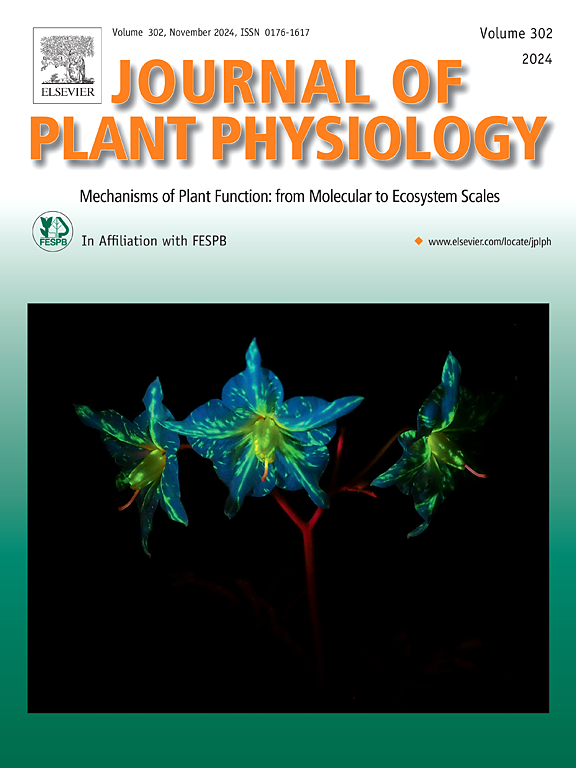A simple, cost-effective, and efficient method for screening CRISPR/Cas9 mutants in plants
IF 4
3区 生物学
Q1 PLANT SCIENCES
引用次数: 0
Abstract
The clustered regularly interspaced short palindromic repeats (CRISPR)/CRISPR-associated protein 9 (Cas9)-mediated genome editing system is widely used for targeted mutagenesis in a growing number of plant species. To streamline the screening process for mutants, especially those generated from low-efficiency editing events, there is a need for a rapid, cost-effective, and efficient method. Although several screening methods have been developed to process initial samples, these methods often tend to be time-consuming, expensive, or inefficient when dealing with larger sample sizes. Here we describe a simple, rapid, low-cost, and sensitive screening method for screening CRISPR/Cas9 mutants called PCR-Bsl I-associated analysis (PCR-BAA). This method requires only standard PCR and Bsl I restriction enzyme digestion, as well as agarose gel electrophoresis analysis. This method is particularly well suited for the efficient screening of mutants from larger populations of transformants. The simplicity, low cost, and high sensitivity of the PCR-BAA method make it particularly suitable for rapid screening of CRISPR/Cas9-induced mutants, especially those from low-efficiency editing events.
筛选植物 CRISPR/Cas9 突变体的简单、经济、高效方法
聚类规则间隔短回文重复序列(CRISPR)/CRISPR 相关蛋白 9(Cas9)介导的基因组编辑系统被广泛用于越来越多植物物种的定向诱变。为了简化突变体的筛选过程,尤其是低效编辑事件产生的突变体,需要一种快速、经济、高效的方法。虽然已经开发出了几种筛选方法来处理初始样本,但这些方法往往耗时、昂贵,或者在处理较大样本量时效率低下。在此,我们介绍一种简单、快速、低成本且灵敏的筛选方法,用于筛选 CRISPR/Cas9 突变体,即 PCR-Bsl I 相关分析(PCR-BAA)。这种方法只需要标准的 PCR 和 Bsl I 限制性酶消化以及琼脂糖凝胶电泳分析。这种方法特别适合从较大的转化子群体中高效筛选突变体。PCR-BAA 方法简单、成本低、灵敏度高,特别适合快速筛选 CRISPR/Cas9 诱导的突变体,尤其是低效编辑事件产生的突变体。
本文章由计算机程序翻译,如有差异,请以英文原文为准。
求助全文
约1分钟内获得全文
求助全文
来源期刊

Journal of plant physiology
生物-植物科学
CiteScore
7.20
自引率
4.70%
发文量
196
审稿时长
32 days
期刊介绍:
The Journal of Plant Physiology is a broad-spectrum journal that welcomes high-quality submissions in all major areas of plant physiology, including plant biochemistry, functional biotechnology, computational and synthetic plant biology, growth and development, photosynthesis and respiration, transport and translocation, plant-microbe interactions, biotic and abiotic stress. Studies are welcome at all levels of integration ranging from molecules and cells to organisms and their environments and are expected to use state-of-the-art methodologies. Pure gene expression studies are not within the focus of our journal. To be considered for publication, papers must significantly contribute to the mechanistic understanding of physiological processes, and not be merely descriptive, or confirmatory of previous results. We encourage the submission of papers that explore the physiology of non-model as well as accepted model species and those that bridge basic and applied research. For instance, studies on agricultural plants that show new physiological mechanisms to improve agricultural efficiency are welcome. Studies performed under uncontrolled situations (e.g. field conditions) not providing mechanistic insight will not be considered for publication.
The Journal of Plant Physiology publishes several types of articles: Original Research Articles, Reviews, Perspectives Articles, and Short Communications. Reviews and Perspectives will be solicited by the Editors; unsolicited reviews are also welcome but only from authors with a strong track record in the field of the review. Original research papers comprise the majority of published contributions.
 求助内容:
求助内容: 应助结果提醒方式:
应助结果提醒方式:


